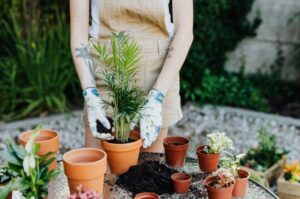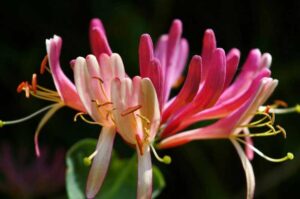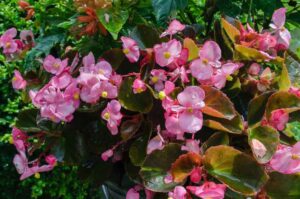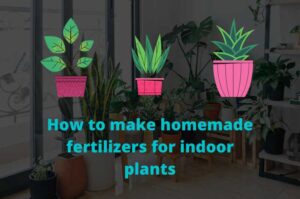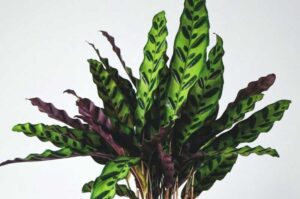Do Plants Need Direct Sunlight Or Just Light? (Explained)
It is a well-established fact that all indoor or outdoor plants need soil, water, and some amount of fertilizer to grow well. But finding the right amount of sunlight can be tricky, especially if you are a beginner. An obvious question that comes to our mind is whether our plants require direct sunlight or just light? Here is the answer.
Direct, and indirect sunlight depends entirely upon the plants. Most outdoor plants thrive in direct sunlight, while some need full shade or partial sun. In the case of indoor or house plants, a regular dose of indirect and bright sunlight would suffice.
However, it is better to check the light requirements of all your plants and place them in an appropriate position. If your plant is not showing any considerable growth or leggy, or the leaves are getting decolored or drooping, it indicates a sunlight deficiency.
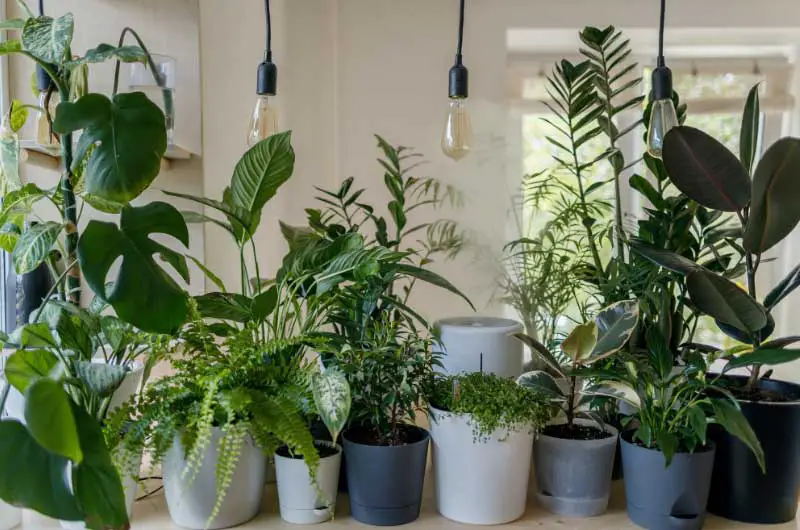
Why is sunlight required For the plants?
Why can’t plants grow in all dark? This is photosynthesis, a process by which plants make their food. The essential factor for this process is sunlight. Oxygen, water, and sunlight are converted into carbohydrates, which plants consume to thrive.
Sugar acts as a fuel for a plant’s growth. The amount of sunlight the plant receives is directly proportional to the plant’s growth. The more light they get, the more energy they produce, and their growth faster.
There are two characteristics of sunlight that decide plants’ ‘how and why’ behavior.
- Quality
- Quantity
Quality
Quality is dependent on the type of light hitting the plant. Light is a form of energy having varying wavelengths, and each wavelength corresponds to a particular color. Colors visible to us through naked eyes may be useless to plants because they reflect this color and appear green.
Instead, colors like orange, red, blue, yellow, violet, UV rays, and infrared rays are beneficial for plants because plants can absorb them. Blue and red light are most efficient for the process of photosynthesis.
Quantity
The quantity depends upon the brightness or intensity of light hitting the plants. When more light photons hit the leaves, more energy is captured by the plant, and thus faster is their growth. For example, fruit and flower-producing plants depend upon intense light for their development.
Different plants may need different levels of sunlight to carry out photosynthesis. Some may require a dull, indirect light, while others may need a full-time bright light.
Do all the plants require sunlight?
Well, the shortest answer is yes! light is an essential requirement for plants to grow and survive. Some indoor or outdoor plants may need lowlights, but eventually, a light source is required to remain alive.
Yes, there are certain plants that can survive without being exposed to the sunlight. But still, they need a source of light(artificial light) to thrive.
Difference between indirect and direct sunlight
Haven’t you heard these terms often while talking about plant requirements? Let’s dive in to understand the difference between these two:
1. Indirect sunlight (partial sunlight)
It means a location where sun rays are not directly falling over the plants. The beams are getting reflected and filtered either through a window or the leaves of trees. So these plants can comfortably endure long hours without light because they are getting some sun.
Here are some plants that crave indirect sunlight:
- Most ferns
- Calathea
- Alocasia
- Dragon trees
- Monstera
- Peace lilies
- Most orchids
- Snake plants (Sansevieria)
- African violets
- Pothos
- Philodendron
2. Direct sunlight
Direct sunlight is the constant, unfiltered sun rays hitting the plants all through the day. Such plants have difficulty surviving indoors due to the lack of natural light. However, keeping them near the sun-facing windows would work.
Here are some plants that love direct sun:
- Succulents
- Desert roses
- Aloe vera
- Most non-green vegetables
- Fruit trees
- Geraniums
- Most herbs
- Begonias
- Madagascar palms
- Jade plant
- Date, areca palm, and ponytails
- Bird of paradise etc.
Understanding the terminology as per the plant labels
Plants come with tags that describe the amount and intensity of sunlight required. It is therefore essential to understand what these labels mean:
- Full sun– The plant requires a minimum of 6 hours of direct sun daily.
- Part sun– The plant will grow well if it gets direct sun between 3 to 6 hours.
- Part shade– The plant needs the sun for 4 to 5 hours regularly but will thrive only if protected from burning mid-day sun rays.
- Full shade– The plant will thrive in less than three hours of daily sunlight.
Do plants need direct sunlight or just light?
It is the question of the millennium! The answer depends on the plant species. All the plant species are different, and so are their light requirements. The plant’s origin determines the light conditions.
Can you grow plants in indirect sunlight?
A simple yes! And as a matter of fact, most plants crave indirect sunlight and grow exceptionally well without the burning hot rays over them.
Importance of sunlight direction in your home
You can alter the amount of indirect and direct light that your home plants receive by keeping them in an appropriate place. Analyzing and gauging the window location of your home can give you a clear idea of where your house plant would best survive.
- Windows facing the East:
These windows get strong direct sunlight in the morning hours and indirect sunlight in the latter part of the day. If placed near these windows, the plants that need a moderate dose of bright and indirect light will thrive.
- Windows facing the West:
Plants kept near west-facing windows will get direct sunlight only for a few hours of the day. The windows receive indirect lights in the morning and early noon and get direct sunlight only after the mid-noon until the sunset.
- Windows facing the South:
Rooms with windows facing south get the brightest and strongest light of all. It’s the favorite place for indoor plants needing huge amounts of direct sunlight. They will receive sunlight from sunrise to sunset. For example, most flowering plants need low light for the whole year.
- Windows facing the North:
These windows never get any direct sunlight. They offer indirect sunlight, and the plants requiring a cool and shaded area will grow well if placed here. For example- Ferns and plants that prefer low lights.
- Note: The light requirements are always mentioned on the tags with the plants. It is advisable to keep the plants as specified in the tags.
Can you filter direct sunlight?
Yes, it’s possible! You can filter the direct sunlight into indirect light through windows.
Suppose you want to grow moderate light requiring plants, and all you have is a window that is facing southwards; try these tricks:
- Hang a sheer curtain over your windows. The curtain will filter out the burning sun rays.
- For glass windows, place the plants at some distance from the windows to prevent direct rays.
- Certain window films block 40-80% of the UV rays entering in. Thus, creating a suitable environment for your plants besides keeping your home cool.
Measuring light levels of your home
If you are unsure of the light levels of your home, it’s better to conduct a few tests and find out whether your home gets enough sunlight for plants or not.
1. Shadow test
It is the most straightforward test to check the light levels. During the noon(brightest time), hold the plant in the sun and observe its shadow. You get three results:
- Direct light– You get a dark shadow with well-defined edges when there is direct light.
- Bright light– You get either one or many dark shadows with a blurred outline.
- Low light– You notice multiple, faint shadows with unclear boundaries.
Depending upon these tests, you can choose the type of plants and where you can keep them in your home according to light levels.
2. Light meter
If you want to be more precise, go for a light meter. It measures light levels in foot-candles( a traditional way of calculating light) or lux(1/10th of the one-foot candle).
Additionally, you can download the light meter on your smartphone to measure the light levels.
3. Observe plants growth or appearance
It is a hit-and-trial method. Check for light levels recommended for plants and place them accordingly. If they are doing fine, that means they are getting the recommended level of light.
However, when they don’t get enough sunlight, plants show some signs like:
- Heavy growth in the direction of light
- Small leaves
- No growth at all
- Sparse growth
- Moist soil
- Exhibit etiolation(plants become tall and spindly in search of sunlight)
And when the plant gets light more than required, it shows signs like:
- Dry, crisp leaves
- Brown edges of leaves
- Sunburn spots
- The light color of foliage
Now you know all about direct and indirect sunlight and the plants that love both. So, before deciding the plants’ location, first of all, analyze your home’s layout and light sources and keep your plants accordingly. Since light is the crucial factor for the overall health of the plants, keeping them according to their light needs will fulfill their most vital necessity. And you will get beautiful, blooming, and healthy plants!

